 This month’s installment of “The Art of Wine & Food” at The Museum of Art Fort Lauderdale featured a very special guest: Master Sommelier Andrea Immer Robinson! In town for the South Beach Wine & Food Festival, Andrea was kind enough to join us for the evening and present an educational seminar focusing on Old World vs New World wines featuring her innovative stemware line “The One.”
This month’s installment of “The Art of Wine & Food” at The Museum of Art Fort Lauderdale featured a very special guest: Master Sommelier Andrea Immer Robinson! In town for the South Beach Wine & Food Festival, Andrea was kind enough to join us for the evening and present an educational seminar focusing on Old World vs New World wines featuring her innovative stemware line “The One.”When considering your vinous selections for the most romantic day of the year why not consider something pink AND sparkling? If there was ever a day to indulge in a deliciously elegant Brut Rosé, Valentine's Day would undoubtedly be it! Not only is the color perfect for this most romantic of occasions, but these wines definitely add that level of decadence that makes a special occasion well...special. As an added bonus these wines are also extremely versatile and perfect for either sipping on their own or paired with your favorite aphrodisiac-laden menu.This year I've selected some of my favorite pink sparklers from both the Old and New Worlds at a variety of price points to suit a variety of vinous budgets: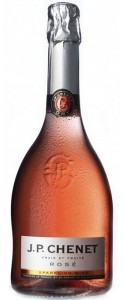 J.P. Chenet Brut Rosé NV, France ($12): This French sparkler is made of 100% Bobal, a grape variety native to the Utiel-Requena region in Valencia, Spain. The name derives from the Latin bovale, in reference to the shape of a bull’s head. This fresh, fruity wine has a delightful pink color and aromas and flavors of red berries, cherries, and strawberries. While it makes a perfect apéritif , this delightfully festive bubbly will also pair beautifully with desserts featuring red berries, fruit salads and/or fruit pastries.
J.P. Chenet Brut Rosé NV, France ($12): This French sparkler is made of 100% Bobal, a grape variety native to the Utiel-Requena region in Valencia, Spain. The name derives from the Latin bovale, in reference to the shape of a bull’s head. This fresh, fruity wine has a delightful pink color and aromas and flavors of red berries, cherries, and strawberries. While it makes a perfect apéritif , this delightfully festive bubbly will also pair beautifully with desserts featuring red berries, fruit salads and/or fruit pastries. Schramsberg Mirabelle Brut Rosé NV ($30): this sparkler is a blend of 51% Chardonnay and 49% Pinot Noir from Schramsberg’s select cool-climate vineyards in Northern California. Flavor depth and aromatic complexity result from the blending of base wine lots aged in barrels and tanks for one or more years. The wine undergoes secondary fermentation in the bottle and rests in Schramsberg’s historic Diamond Mountain caves for approximately 2 years. This multi-vintage Brut Rosé has aromas and flavors of strawberry, candied orange, watermelon and cinnamon with a creamy richness and long, lingering acidity. It is delicious on its own and also pairs well with dishes including grilled salmon, country fried chicken, BBQ pork ribs, Caprese salad, poke tuna or simple pastas.
Schramsberg Mirabelle Brut Rosé NV ($30): this sparkler is a blend of 51% Chardonnay and 49% Pinot Noir from Schramsberg’s select cool-climate vineyards in Northern California. Flavor depth and aromatic complexity result from the blending of base wine lots aged in barrels and tanks for one or more years. The wine undergoes secondary fermentation in the bottle and rests in Schramsberg’s historic Diamond Mountain caves for approximately 2 years. This multi-vintage Brut Rosé has aromas and flavors of strawberry, candied orange, watermelon and cinnamon with a creamy richness and long, lingering acidity. It is delicious on its own and also pairs well with dishes including grilled salmon, country fried chicken, BBQ pork ribs, Caprese salad, poke tuna or simple pastas. Domaine Carneros Cuvée de la Pompadour Brut Rosé NV ($45): This wine was crafted to celebrate the life and times of Madame de Pompadour (the great courtesan and mistress of Louis XV) who is credited with introducing Champagne to the court and was an influential tastemaker in the matters of art, architecture and philosophy–famous for her comment, “Champagne is the only wine a woman can drink and remain beautiful.” This sparkler was made using the time-honored Champenoise methods of production applied to fruit sourced exclusively from Carneros. It is a delicious blend of 58% Pinot Noir, 42% Chardonnay meant to be enjoyed at a fairly young age, when the fruity character is still predominant. This wine has aromas and flavors of wild strawberries and roses with notes of peach with lovely fruit and a food-friendly acidity.
Domaine Carneros Cuvée de la Pompadour Brut Rosé NV ($45): This wine was crafted to celebrate the life and times of Madame de Pompadour (the great courtesan and mistress of Louis XV) who is credited with introducing Champagne to the court and was an influential tastemaker in the matters of art, architecture and philosophy–famous for her comment, “Champagne is the only wine a woman can drink and remain beautiful.” This sparkler was made using the time-honored Champenoise methods of production applied to fruit sourced exclusively from Carneros. It is a delicious blend of 58% Pinot Noir, 42% Chardonnay meant to be enjoyed at a fairly young age, when the fruity character is still predominant. This wine has aromas and flavors of wild strawberries and roses with notes of peach with lovely fruit and a food-friendly acidity. Taittinger Brut Rosé Prestige NV ($70): This decadent Champagne from one of the region's most heralded families simply exudes elegance in it's gorgeous clear bottle and gold packaging. A quantity of still red wine (15%) produced from the best Pinot Noirs from Montagne de Reims and Les Riceys is added to give this cuvée its unmistakable color and vibrant intensity on the palate. The high proportion of Chardonnay (30%) brings the elegance and delicacy that underpin Taittinger’s signature style. The bubbles are very fine, a sign of quality in a sparkling wine and it gives off expressive aromas of wild raspberry, cherry and black currant. The elegant palate is rife with fresh, lively notes of red fruit. This Champagne can be enjoyed as an aperitif but would also complement dishes such as pate, charcuterie, or roasted lamb. Wine Advocate, 90 points.
Taittinger Brut Rosé Prestige NV ($70): This decadent Champagne from one of the region's most heralded families simply exudes elegance in it's gorgeous clear bottle and gold packaging. A quantity of still red wine (15%) produced from the best Pinot Noirs from Montagne de Reims and Les Riceys is added to give this cuvée its unmistakable color and vibrant intensity on the palate. The high proportion of Chardonnay (30%) brings the elegance and delicacy that underpin Taittinger’s signature style. The bubbles are very fine, a sign of quality in a sparkling wine and it gives off expressive aromas of wild raspberry, cherry and black currant. The elegant palate is rife with fresh, lively notes of red fruit. This Champagne can be enjoyed as an aperitif but would also complement dishes such as pate, charcuterie, or roasted lamb. Wine Advocate, 90 points. Champagne Bruno Paillard Rosé Première Cuvée MV ($80): Composed of a majority of Pinot Noir, this Champagne is produced exclusively from the first pressing and a percentage of Chardonnay from the North of the Côte des Blancs adds freshness to the final blend. The "dosage" is very low to produce an authentic Brut wine - 8-9 grams of residual sugar per litre. The disgorgement date is on the back label and the minimum maturation in the cellar after disgorgement and before shipment is 3 to 4 months. Aromas of red currant, Morello cherry, strawberry and violet are expressed on the palate. The palate is refined and elegant with a long and delicate finish. Enjoy as an aperitif or with dishes including poultry, white meat, mixed salads and cheeses.XOXO,
Champagne Bruno Paillard Rosé Première Cuvée MV ($80): Composed of a majority of Pinot Noir, this Champagne is produced exclusively from the first pressing and a percentage of Chardonnay from the North of the Côte des Blancs adds freshness to the final blend. The "dosage" is very low to produce an authentic Brut wine - 8-9 grams of residual sugar per litre. The disgorgement date is on the back label and the minimum maturation in the cellar after disgorgement and before shipment is 3 to 4 months. Aromas of red currant, Morello cherry, strawberry and violet are expressed on the palate. The palate is refined and elegant with a long and delicate finish. Enjoy as an aperitif or with dishes including poultry, white meat, mixed salads and cheeses.XOXO,
Thirty Two East, a favorite restaurant of ours here in Delray Beach, which featured the wines of two producers, one Old World, one New, who are dedicated to crafting world class wines from Rhône grape varieties. These two producers also happen to be related and represent a beautiful story of friendship that culminated in the production of some truly fabulous wines!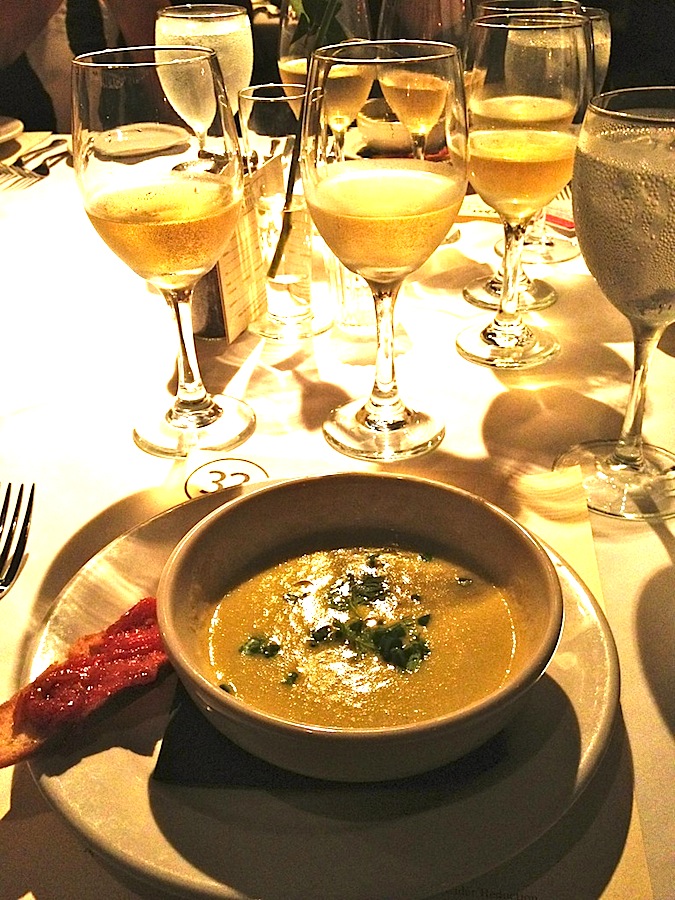 Our tale of two wineries begins with Château de Beaucastel, located in France's Rhône Valley known for producing wines that represent the best of what the Southern Rhône has to offer. While the focus of the Northern Rhone is primarily single varietal wines (whites are made from Viognier and reds from Syrah) the Southern Rhône is all about blends. Up to thirteen grapes are permitted in the signature red wine of the Southern Rhône, Châteauneuf du Pape, which is comprised predominantly of Grenache. Whites from this region are generally a blend of Roussanne, Marsanne and Grenache Blanc.The Beaucastel family has inhabited this region since the middle of the sixteenth century and was among the most notable families of the small town of Courthezon. In 1909 Pierre Tramier bought the property and Beaucastel then passed to his son-in-law, Pierre Perrin, who considerably increased the vineyard holdings. His efforts were continued by his son Jacques until 1978. Today the estate is helmed by Jean Pierre and François Perrin, sons of Jacques, but Marc, Pierre, Thomas and Matthieu, who represent the fifth generation, are ready to pursue this fabulous family history.
Our tale of two wineries begins with Château de Beaucastel, located in France's Rhône Valley known for producing wines that represent the best of what the Southern Rhône has to offer. While the focus of the Northern Rhone is primarily single varietal wines (whites are made from Viognier and reds from Syrah) the Southern Rhône is all about blends. Up to thirteen grapes are permitted in the signature red wine of the Southern Rhône, Châteauneuf du Pape, which is comprised predominantly of Grenache. Whites from this region are generally a blend of Roussanne, Marsanne and Grenache Blanc.The Beaucastel family has inhabited this region since the middle of the sixteenth century and was among the most notable families of the small town of Courthezon. In 1909 Pierre Tramier bought the property and Beaucastel then passed to his son-in-law, Pierre Perrin, who considerably increased the vineyard holdings. His efforts were continued by his son Jacques until 1978. Today the estate is helmed by Jean Pierre and François Perrin, sons of Jacques, but Marc, Pierre, Thomas and Matthieu, who represent the fifth generation, are ready to pursue this fabulous family history.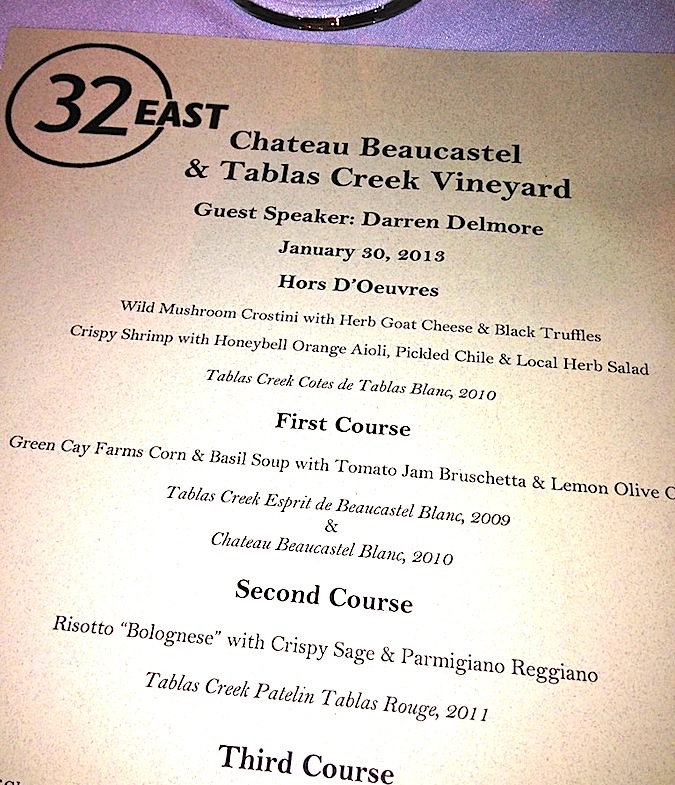 Fast forward to 1985 at which time the friendship between the Perrin family and Robert Haas, longtime importer and founder of Vineyard Brands, results in the creation of Tablas Creek Vineyard. Since the 1970s both families had recognized the potential of California's climate as an ideal place for planting Rhône varietal grapes and in 1987, they began the lengthy process of creating a Châteauneuf-du-Pape style vineyard from scratch in the New World.In 1989 they purchased a 120-acre property in the hilly Las Tablas district of west Paso Robles for its similarities to Châteauneuf du Pape: limestone soils, a favorable climate, and rugged terrain. This is also where the winery ultimately derived its name. The partners imported the traditional varietals grown on the Perrins’ celebrated estate, including Mourvèdre, Grenache Noir, Syrah, and Counoise for reds, and Roussanne, Viognier, Marsanne, and Grenache Blanc for whites. These imported vines passed a rigorous 3-year USDA testing program, were propagated and grafted in the on-site nursery, and used to plant the organic estate vineyard. This nursery of clones from Beaucastel cuttings are now used widely throughout the Paso Robles region. The estate currently has approximately 105 acres under vine and works with indigenous yeasts and favors large, neutral oak barrels and casks for aging.Tablas Creek National Sales Manager, Darren Delmore, joined us for the dinner and guided us through the tasting of these special wines. Sampling the wines of California's Tablas Creek and the Rhône's Château de Beaucastel together highlighted the similarities and differences of their respective terroirs. The wines were paired with the delicious cuisine of Chef Nick Morfogen which accentuated the nuances of each wine beautifully!
Fast forward to 1985 at which time the friendship between the Perrin family and Robert Haas, longtime importer and founder of Vineyard Brands, results in the creation of Tablas Creek Vineyard. Since the 1970s both families had recognized the potential of California's climate as an ideal place for planting Rhône varietal grapes and in 1987, they began the lengthy process of creating a Châteauneuf-du-Pape style vineyard from scratch in the New World.In 1989 they purchased a 120-acre property in the hilly Las Tablas district of west Paso Robles for its similarities to Châteauneuf du Pape: limestone soils, a favorable climate, and rugged terrain. This is also where the winery ultimately derived its name. The partners imported the traditional varietals grown on the Perrins’ celebrated estate, including Mourvèdre, Grenache Noir, Syrah, and Counoise for reds, and Roussanne, Viognier, Marsanne, and Grenache Blanc for whites. These imported vines passed a rigorous 3-year USDA testing program, were propagated and grafted in the on-site nursery, and used to plant the organic estate vineyard. This nursery of clones from Beaucastel cuttings are now used widely throughout the Paso Robles region. The estate currently has approximately 105 acres under vine and works with indigenous yeasts and favors large, neutral oak barrels and casks for aging.Tablas Creek National Sales Manager, Darren Delmore, joined us for the dinner and guided us through the tasting of these special wines. Sampling the wines of California's Tablas Creek and the Rhône's Château de Beaucastel together highlighted the similarities and differences of their respective terroirs. The wines were paired with the delicious cuisine of Chef Nick Morfogen which accentuated the nuances of each wine beautifully!
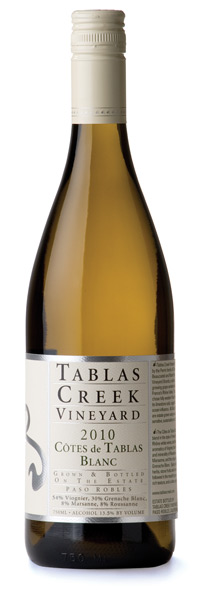 Tablas Creek Vineyard, Côtes de Tablas Blanc, Paso Robles, 2010Like most wines of the Southern Rhône, this wine is a blend of white grape varieties which in this case are comprised of 54% Viognier, 30% Grenache Blanc, 8% Roussanne and 8% Marsanne. All the fruit for this wine is estate grown and features the floral aromatics and stone fruit of Viognier, the crisp acidity and rich mouthfeel of Grenache Blanc, and the structure and minerality of Marsanne and Roussanne. This wine is perfect as an aperitif or paired with dishes such as Moules Marinières or Fish with Fennel. Drink now. Wine Advocate, 90 points.Price: $25
Tablas Creek Vineyard, Côtes de Tablas Blanc, Paso Robles, 2010Like most wines of the Southern Rhône, this wine is a blend of white grape varieties which in this case are comprised of 54% Viognier, 30% Grenache Blanc, 8% Roussanne and 8% Marsanne. All the fruit for this wine is estate grown and features the floral aromatics and stone fruit of Viognier, the crisp acidity and rich mouthfeel of Grenache Blanc, and the structure and minerality of Marsanne and Roussanne. This wine is perfect as an aperitif or paired with dishes such as Moules Marinières or Fish with Fennel. Drink now. Wine Advocate, 90 points.Price: $25
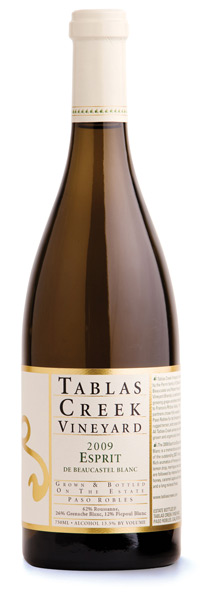 Tablas Creek Vineyard, Esprit de Beaucastel Blanc, Paso Robles, 2009This wine a blend of three estate-grown varietals, propagated from budwood cuttings from the Château de Beaucastel estate. It is comprised of 62% Roussanne, 26% Grenache Blanc and 12% Picpoul Blanc. Roussanne provides the core richness, minerality, and flavors of honey and spice, while Grenache Blanc adds green apple and anise flavors, a lush mouthfeel and bright acids. Picpoul Blanc completes the blend, adding a saline minerality and tropical notes. Drink: 2012-2016. Wine Advocate, 91 points; Wine Spectator, 89 points.Price: $42
Tablas Creek Vineyard, Esprit de Beaucastel Blanc, Paso Robles, 2009This wine a blend of three estate-grown varietals, propagated from budwood cuttings from the Château de Beaucastel estate. It is comprised of 62% Roussanne, 26% Grenache Blanc and 12% Picpoul Blanc. Roussanne provides the core richness, minerality, and flavors of honey and spice, while Grenache Blanc adds green apple and anise flavors, a lush mouthfeel and bright acids. Picpoul Blanc completes the blend, adding a saline minerality and tropical notes. Drink: 2012-2016. Wine Advocate, 91 points; Wine Spectator, 89 points.Price: $42 Château Beaucastel, Châteauneuf du Pape Blanc, Rhone Valley, 2010Comprised of 80% Roussanne and 20% Grenache blanc this wine is fermented in 30% new oak barrels with the remaining 70% fermented in stainless steel tanks. The wine displays beautiful notes of star fruit, acacia flower and peach which evolve into honey and tropical fruit with a hint of pie crust. The complexity is balanced by a lovely acidity and long, lingering finish. Drink over the next 4-5 years. Wine Advocate, 95 points; Wine Spectator, 93 points.Price: $97
Château Beaucastel, Châteauneuf du Pape Blanc, Rhone Valley, 2010Comprised of 80% Roussanne and 20% Grenache blanc this wine is fermented in 30% new oak barrels with the remaining 70% fermented in stainless steel tanks. The wine displays beautiful notes of star fruit, acacia flower and peach which evolve into honey and tropical fruit with a hint of pie crust. The complexity is balanced by a lovely acidity and long, lingering finish. Drink over the next 4-5 years. Wine Advocate, 95 points; Wine Spectator, 93 points.Price: $97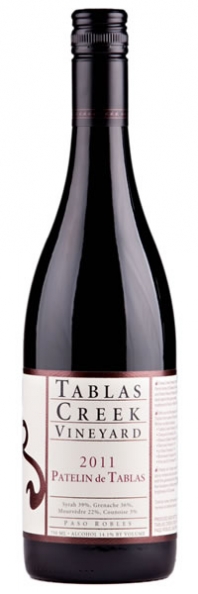 Tablas Creek Vineyard, Patelin de Tablas Rouge, Paso Robles, 2011This wine a blend of four red Rhône varietals: 52% Syrah, 29% Grenache, 18% Mourvèdre and 1% Counoise from several of the top Rhône vineyards in Paso Robles. Like many red wines from the Rhône Valley, it is based on the dark fruit, mineral and spice of Syrah, with the brightness and fresh acidity of Grenache, the structure and meatiness of Mourvèdre and a small addition of Counoise for complexity. Drink: 2012-2016. Wine Advocate, 89 points.Price: $20
Tablas Creek Vineyard, Patelin de Tablas Rouge, Paso Robles, 2011This wine a blend of four red Rhône varietals: 52% Syrah, 29% Grenache, 18% Mourvèdre and 1% Counoise from several of the top Rhône vineyards in Paso Robles. Like many red wines from the Rhône Valley, it is based on the dark fruit, mineral and spice of Syrah, with the brightness and fresh acidity of Grenache, the structure and meatiness of Mourvèdre and a small addition of Counoise for complexity. Drink: 2012-2016. Wine Advocate, 89 points.Price: $20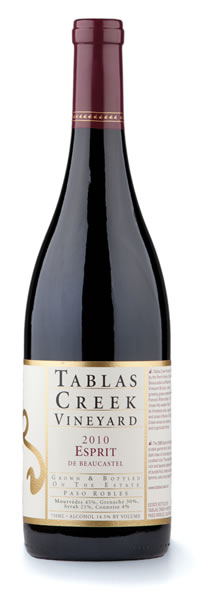 Tablas Creek Vineyard, Esprit de Beaucastel Rouge, Paso Robles, 2010This wine is a blend of four estate-grown varietals, propagated from budwood cuttings from the Château de Beaucastel estate: 45% Mourvedre, 30% Grenache, 21% Syrah and 4% Counoise. The wine is based on the dark red fruit, earth, spice and mid-palate richness of Mourvèdre, with additions of Grenache for forward fruit, approachability and lushness, Syrah for mineral, aromatics, and back-palate tannins, and Counoise for brambly spice and acidity. Drink: 2015-2025. Wine Advocate, 93-95 points.Price: $59
Tablas Creek Vineyard, Esprit de Beaucastel Rouge, Paso Robles, 2010This wine is a blend of four estate-grown varietals, propagated from budwood cuttings from the Château de Beaucastel estate: 45% Mourvedre, 30% Grenache, 21% Syrah and 4% Counoise. The wine is based on the dark red fruit, earth, spice and mid-palate richness of Mourvèdre, with additions of Grenache for forward fruit, approachability and lushness, Syrah for mineral, aromatics, and back-palate tannins, and Counoise for brambly spice and acidity. Drink: 2015-2025. Wine Advocate, 93-95 points.Price: $59 Château Beaucastel, Châteauneuf du Pape Rouge, Rhône Valley, 2010This wine is structured and intense yet lean, thanks in part to the large percentage of Mourvedre (about 30%) in the final blend. Its tannic backbone and resistance to oxidation help Beaucastel age with grace. Grenache (30%) contributes a warming sensation of ripe fruit and a velvety feeling in the mouth. Syrah at 10%, and Muscardin and Vaccarese with around 5% each, add color and spicy aromas while increasing the wines aging potential. 5% of Cinsault is added for softness and its special bouquet. The remainder is made up of small quantities of the 7 other varieties allowed in Châteauneuf du Pape. They add that extra note of graceful complexity which makes Château de Beaucastel such an extraordinary wine. Drink: 2015-2045. Wine Advocate, 95 points.Price: $99Cheers,
Château Beaucastel, Châteauneuf du Pape Rouge, Rhône Valley, 2010This wine is structured and intense yet lean, thanks in part to the large percentage of Mourvedre (about 30%) in the final blend. Its tannic backbone and resistance to oxidation help Beaucastel age with grace. Grenache (30%) contributes a warming sensation of ripe fruit and a velvety feeling in the mouth. Syrah at 10%, and Muscardin and Vaccarese with around 5% each, add color and spicy aromas while increasing the wines aging potential. 5% of Cinsault is added for softness and its special bouquet. The remainder is made up of small quantities of the 7 other varieties allowed in Châteauneuf du Pape. They add that extra note of graceful complexity which makes Château de Beaucastel such an extraordinary wine. Drink: 2015-2045. Wine Advocate, 95 points.Price: $99Cheers,

This week’s wines were inspired by a recent dinner at Thirty Two East, a favorite restaurant of ours here in Delray Beach, which featured the wines of two producers, one Old World, one New, who are dedicated to crafting world class wines from Rhône grape varieties. These two producers also happen to be related and represent a beautiful story of friendship that culminated in the production of some truly fabulous wines!

Our tale of two wineries begins with Château de Beaucastel, located in France’s Rhône Valley known for producing wines that represent the best of what the Southern Rhône has to offer. While the focus of the Northern Rhone is primarily single varietal wines (whites are made from Viognier and reds from Syrah) the Southern Rhône is all about blends. Up to thirteen grapes are permitted in the signature red wine of the Southern Rhône, Châteauneuf du Pape, which is comprised predominantly of Grenache. Whites from this region are generally a blend of Roussanne, Marsanne and Grenache Blanc.
The Beaucastel family has inhabited this region since the middle of the sixteenth century and was among the most notable families of the small town of Courthezon. In 1909 Pierre Tramier bought the property and Beaucastel then passed to his son-in-law, Pierre Perrin, who considerably increased the vineyard holdings. His efforts were continued by his son Jacques until 1978. Today the estate is helmed by Jean Pierre and François Perrin, sons of Jacques, but Marc, Pierre, Thomas and Matthieu, who represent the fifth generation, are ready to pursue this fabulous family history.
 Fast forward to 1985 at which time the friendship between the Perrin family and Robert Haas, longtime importer and founder of Vineyard Brands, results in the creation of Tablas Creek Vineyard. Since the 1970s both families had recognized the potential of California’s climate as an ideal place for planting Rhône varietal grapes and in 1987, they began the lengthy process of creating a Châteauneuf-du-Pape style vineyard from scratch in the New World.
Fast forward to 1985 at which time the friendship between the Perrin family and Robert Haas, longtime importer and founder of Vineyard Brands, results in the creation of Tablas Creek Vineyard. Since the 1970s both families had recognized the potential of California’s climate as an ideal place for planting Rhône varietal grapes and in 1987, they began the lengthy process of creating a Châteauneuf-du-Pape style vineyard from scratch in the New World.
In 1989 they purchased a 120-acre property in the hilly Las Tablas district of west Paso Robles for its similarities to Châteauneuf du Pape: limestone soils, a favorable climate, and rugged terrain. This is also where the winery ultimately derived its name. The partners imported the traditional varietals grown on the Perrins’ celebrated estate, including Mourvèdre, Grenache Noir, Syrah, and Counoise for reds, and Roussanne, Viognier, Marsanne, and Grenache Blanc for whites. These imported vines passed a rigorous 3-year USDA testing program, were propagated and grafted in the on-site nursery, and used to plant the organic estate vineyard. This nursery of clones from Beaucastel cuttings are now used widely throughout the Paso Robles region. The estate currently has approximately 105 acres under vine and works with indigenous yeasts and favors large, neutral oak barrels and casks for aging.
Tablas Creek National Sales Manager, Darren Delmore, joined us for the dinner and guided us through the tasting of these special wines. Sampling the wines of California’s Tablas Creek and the Rhône’s Château de Beaucastel together highlighted the similarities and differences of their respective terroirs. The wines were paired with the delicious cuisine of Chef Nick Morfogen which accentuated the nuances of each wine beautifully!
 Tablas Creek Vineyard, Côtes de Tablas Blanc, Paso Robles, 2010
Tablas Creek Vineyard, Côtes de Tablas Blanc, Paso Robles, 2010
Like most wines of the Southern Rhône, this wine is a blend of white grape varieties which in this case are comprised of 54% Viognier, 30% Grenache Blanc, 8% Roussanne and 8% Marsanne. All the fruit for this wine is estate grown and features the floral aromatics and stone fruit of Viognier, the crisp acidity and rich mouthfeel of Grenache Blanc, and the structure and minerality of Marsanne and Roussanne. This wine is perfect as an aperitif or paired with dishes such as Moules Marinières or Fish with Fennel. Drink now. Wine Advocate, 90 points.
Price: $25

Tablas Creek Vineyard, Esprit de Beaucastel Blanc, Paso Robles, 2009
This wine a blend of three estate-grown varietals, propagated from budwood cuttings from the Château de Beaucastel estate. It is comprised of 62% Roussanne, 26% Grenache Blanc and 12% Picpoul Blanc. Roussanne provides the core richness, minerality, and flavors of honey and spice, while Grenache Blanc adds green apple and anise flavors, a lush mouthfeel and bright acids. Picpoul Blanc completes the blend, adding a saline minerality and tropical notes. Drink: 2012-2016. Wine Advocate, 91 points; Wine Spectator, 89 points.
Price: $42
 Château Beaucastel, Châteauneuf du Pape Blanc, Rhone Valley, 2010
Château Beaucastel, Châteauneuf du Pape Blanc, Rhone Valley, 2010
Comprised of 80% Roussanne and 20% Grenache blanc this wine is fermented in 30% new oak barrels with the remaining 70% fermented in stainless steel tanks. The wine displays beautiful notes of star fruit, acacia flower and peach which evolve into honey and tropical fruit with a hint of pie crust. The complexity is balanced by a lovely acidity and long, lingering finish. Drink over the next 4-5 years. Wine Advocate, 95 points; Wine Spectator, 93 points.
Price: $97
 Tablas Creek Vineyard, Patelin de Tablas Rouge, Paso Robles, 2011
Tablas Creek Vineyard, Patelin de Tablas Rouge, Paso Robles, 2011
This wine a blend of four red Rhône varietals: 52% Syrah, 29% Grenache, 18% Mourvèdre and 1% Counoise from several of the top Rhône vineyards in Paso Robles. Like many red wines from the Rhône Valley, it is based on the dark fruit, mineral and spice of Syrah, with the brightness and fresh acidity of Grenache, the structure and meatiness of Mourvèdre and a small addition of Counoise for complexity. Drink: 2012-2016. Wine Advocate, 89 points.
Price: $20
 Tablas Creek Vineyard, Esprit de Beaucastel Rouge, Paso Robles, 2010
Tablas Creek Vineyard, Esprit de Beaucastel Rouge, Paso Robles, 2010
This wine is a blend of four estate-grown varietals, propagated from budwood cuttings from the Château de Beaucastel estate: 45% Mourvedre, 30% Grenache, 21% Syrah and 4% Counoise. The wine is based on the dark red fruit, earth, spice and mid-palate richness of Mourvèdre, with additions of Grenache for forward fruit, approachability and lushness, Syrah for mineral, aromatics, and back-palate tannins, and Counoise for brambly spice and acidity. Drink: 2015-2025. Wine Advocate, 93-95 points.
Price: $59
 Château Beaucastel, Châteauneuf du Pape Rouge, Rhône Valley, 2010
Château Beaucastel, Châteauneuf du Pape Rouge, Rhône Valley, 2010
This wine is structured and intense yet lean, thanks in part to the large percentage of Mourvedre (about 30%) in the final blend. Its tannic backbone and resistance to oxidation help Beaucastel age with grace. Grenache (30%) contributes a warming sensation of ripe fruit and a velvety feeling in the mouth. Syrah at 10%, and Muscardin and Vaccarese with around 5% each, add color and spicy aromas while increasing the wines aging potential. 5% of Cinsault is added for softness and its special bouquet. The remainder is made up of small quantities of the 7 other varieties allowed in Châteauneuf du Pape. They add that extra note of graceful complexity which makes Château de Beaucastel such an extraordinary wine. Drink: 2015-2045. Wine Advocate, 95 points.
Price: $99
To purchase these fabulous wines, please call 561-317-6663. Mention this post and receive an additional 10% discount off the purchase of a case!
Cheers,
![]()
Before embarking on a two week exploration of some of France's renowned wine regions, Steve and I spent a few fabulous days in Paris. From food and wine to art and fashion this city definitely has it all! So what to do in this veritable cultural wonderland with only a few short days and so many options? Here's a few of our postcards from "The City of Light."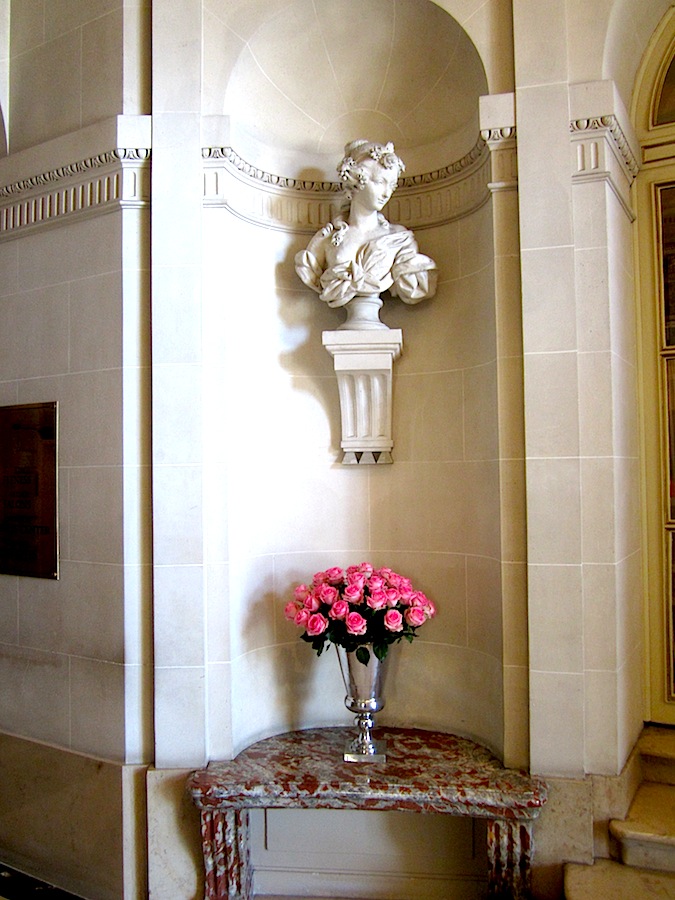
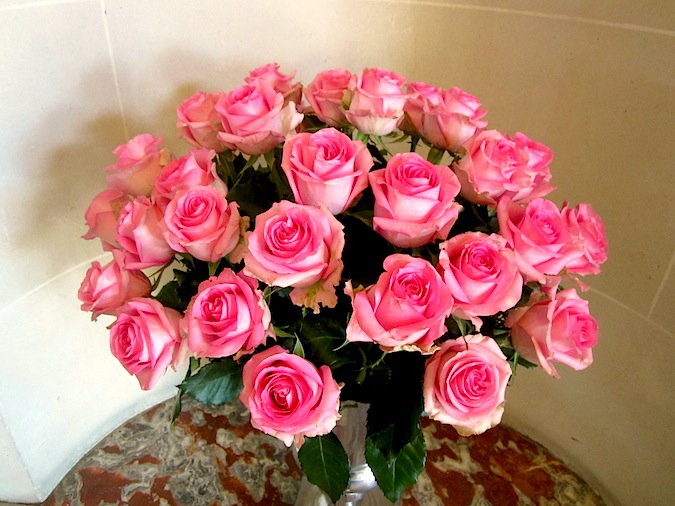 This trip we stayed at the historic Hôtel de Crillon, one of Paris's six Palace Hotels, located on Place de la Concorde. Constructed in 1758, this hotel is situated in the center of Paris, a great location from which to explore this fabulous city. Directly in front of the hotel is the Place de la Concorde, one of the largest squares in Paris, conveniently situated between the Tuileries and the Champs Elyseés. The square is home to the majestic Luxor Obelisk which was originally located at the entrance to the Luxor Temple in Egypt. The structure was gifted to the French in the 19th century and in 1836, King Louis Philippe had it placed where the guillotine once stood during the Revolution. It is flanked by two beautiful, ornate fountains, the Fontaines de la Concorde. The square also provides a beautiful view of the Eiffel Tower at night which I am happy to share with you in the short video below!After arriving at our hotel from the airport on a Sunday morning, we sunk into sumptuous, cozy chairs in the gorgeously appointed lobby to enjoy to enjoy a glass (or two) of Champagne and some delicious pastries including my favorite, pain au chocolat. Shortly after we headed for the Boulevard Raspail Market located in Paris's 6th arrondissement. The market is open three days a week and on Sunday becomes one of the city's marché biologiques, or organic markets, which extends from the Rue de Cherche-Midi to Rue de Rennes. The market featured beautiful stalls of fresh produce, delicious meats, fragrant cheeses and brilliantly colored flowers - it was truly a feast for the senses!
This trip we stayed at the historic Hôtel de Crillon, one of Paris's six Palace Hotels, located on Place de la Concorde. Constructed in 1758, this hotel is situated in the center of Paris, a great location from which to explore this fabulous city. Directly in front of the hotel is the Place de la Concorde, one of the largest squares in Paris, conveniently situated between the Tuileries and the Champs Elyseés. The square is home to the majestic Luxor Obelisk which was originally located at the entrance to the Luxor Temple in Egypt. The structure was gifted to the French in the 19th century and in 1836, King Louis Philippe had it placed where the guillotine once stood during the Revolution. It is flanked by two beautiful, ornate fountains, the Fontaines de la Concorde. The square also provides a beautiful view of the Eiffel Tower at night which I am happy to share with you in the short video below!After arriving at our hotel from the airport on a Sunday morning, we sunk into sumptuous, cozy chairs in the gorgeously appointed lobby to enjoy to enjoy a glass (or two) of Champagne and some delicious pastries including my favorite, pain au chocolat. Shortly after we headed for the Boulevard Raspail Market located in Paris's 6th arrondissement. The market is open three days a week and on Sunday becomes one of the city's marché biologiques, or organic markets, which extends from the Rue de Cherche-Midi to Rue de Rennes. The market featured beautiful stalls of fresh produce, delicious meats, fragrant cheeses and brilliantly colored flowers - it was truly a feast for the senses!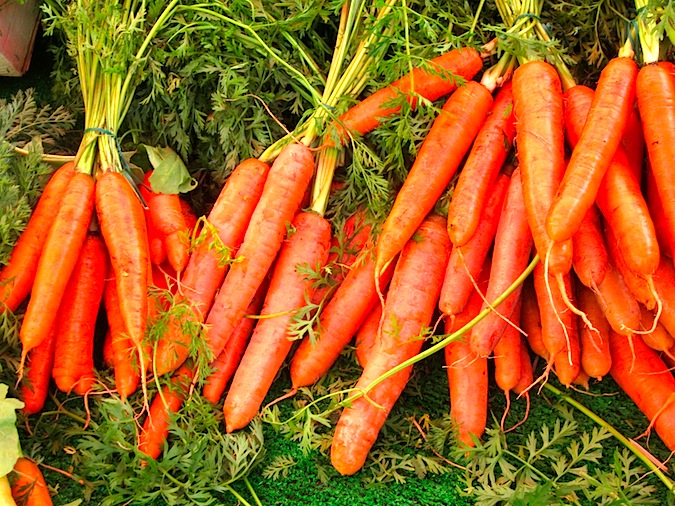
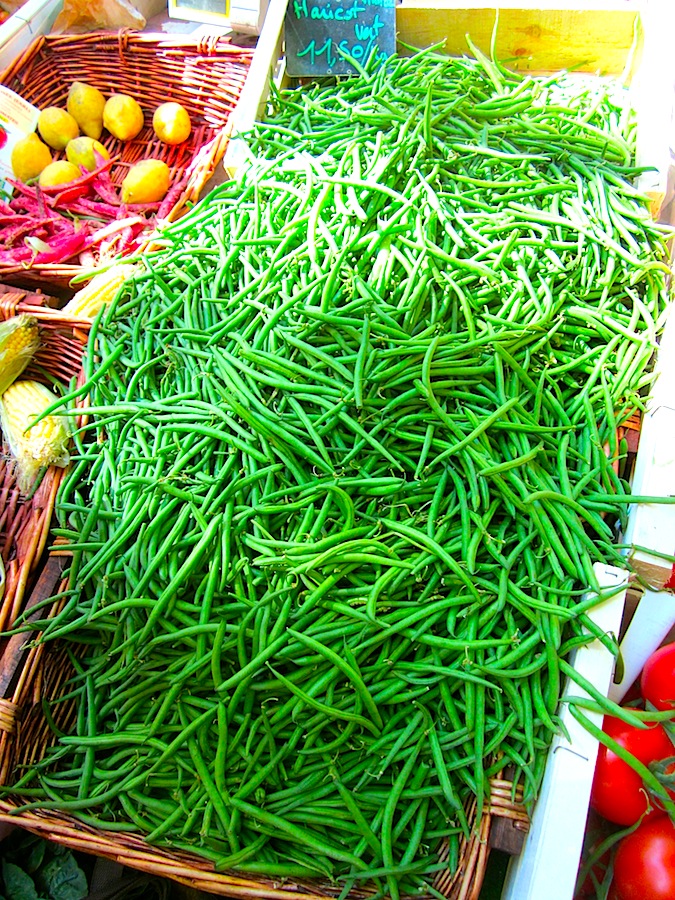
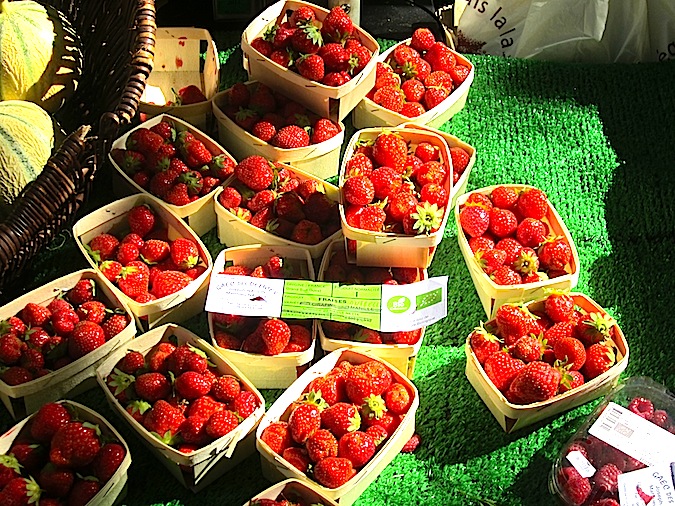

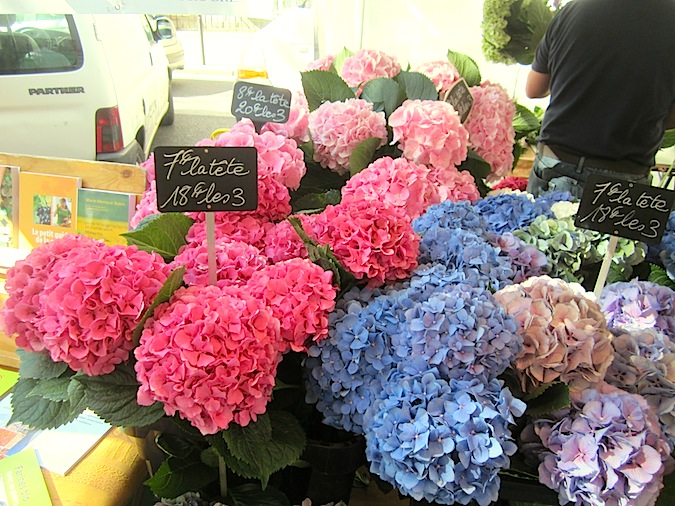 After the market we meandered through Saint-Germain-des-Prés, the charming neighborhood that lines the Left Bank of the Seine and is home to many storied cafés and brasseries including Cafe de Flore (a personal favorite!), Les Deux Magots and Brasserie Lipp. You'll also find an array of specialty food stores including Poilâne, arguably the best bread in Paris, as well as Pierre Hermé, home to mouth-wateringly beautiful confections including delightful mille feuilles, a rainbow of macarons and decadent chocolates.
After the market we meandered through Saint-Germain-des-Prés, the charming neighborhood that lines the Left Bank of the Seine and is home to many storied cafés and brasseries including Cafe de Flore (a personal favorite!), Les Deux Magots and Brasserie Lipp. You'll also find an array of specialty food stores including Poilâne, arguably the best bread in Paris, as well as Pierre Hermé, home to mouth-wateringly beautiful confections including delightful mille feuilles, a rainbow of macarons and decadent chocolates.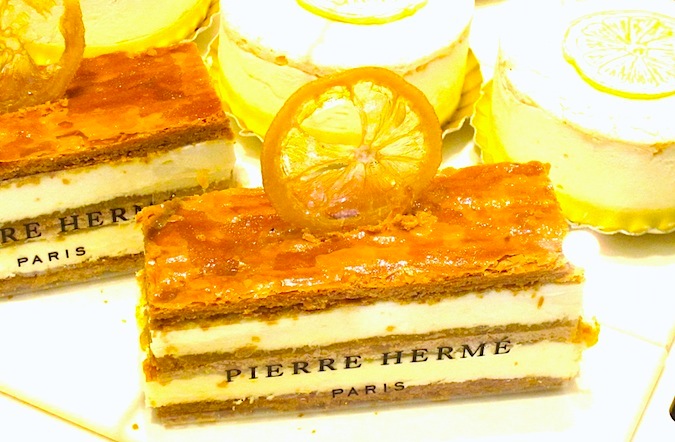
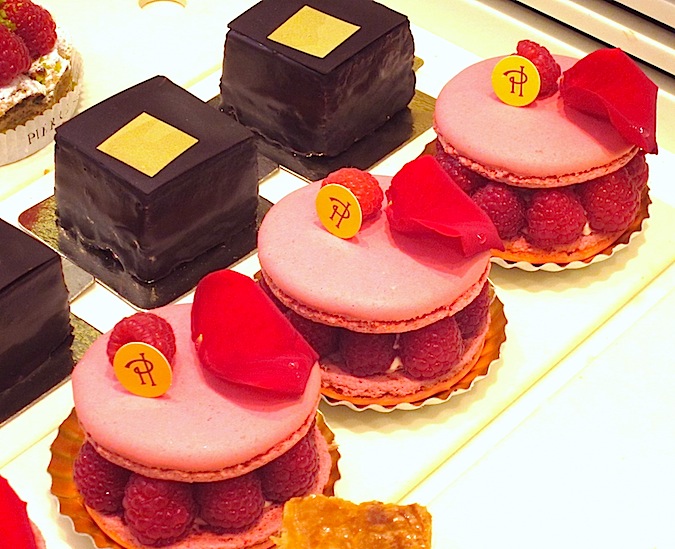
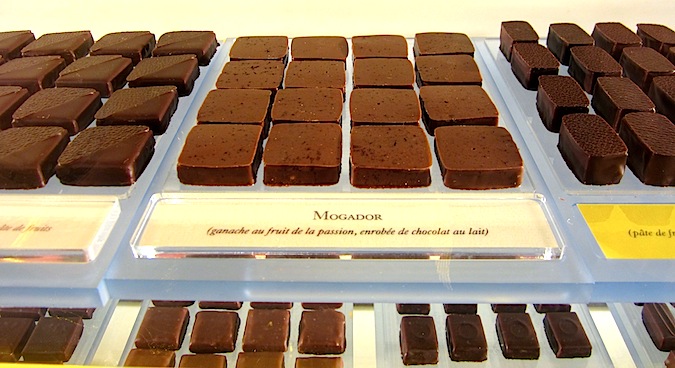 When planning our itinerary for this trip, I was very inspired by one of my new favorite movies, Midnight in Paris, written and directed by Woody Allen and starring Owen Wilson and Rachel McAdams. This movie is a MUST for any Francophile and/or lover of Art History, Literature or Music! I particularly loved the scene at Polidor where Owen Wilson's character first meets Ernest Hemingway and we were able to find it on Rue Monsieur-le-Prince during our walk - it actually looks alot like it does in the movie.
When planning our itinerary for this trip, I was very inspired by one of my new favorite movies, Midnight in Paris, written and directed by Woody Allen and starring Owen Wilson and Rachel McAdams. This movie is a MUST for any Francophile and/or lover of Art History, Literature or Music! I particularly loved the scene at Polidor where Owen Wilson's character first meets Ernest Hemingway and we were able to find it on Rue Monsieur-le-Prince during our walk - it actually looks alot like it does in the movie.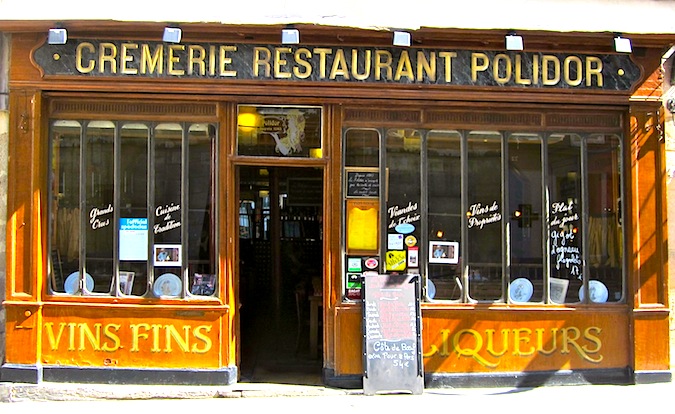 After a mid-afternoon nap, we headed out that evening for a little more exploring and luckily, we didn't have to go far to find another great location from Midnight in Paris - Maxim's was right around the corner from our hotel! Maxim's is an historic Paris eatery established in 1893 which is known for its Art Nouveau decor and reputation for its world class cuisine and famous clientele. Maxim's attracted a slew of celebrities over the years including Jean Cocteau, Aristotle Onassis, Edward VIII and his wife Wallis Simpson as well as Brigitte Bardot, who caused a scandal in the 1970's when she entered the restaurant in her bare feet. In Midnight in Paris, Marion Cotillard's character Adriana is smitten with the idea of La Belle Epoque in Paris and Maxim's is one of the places she desperately wants to visit in order to escape the mundane 1920's. I don't know about La Belle Epoque but it was certainly nice to be there in 2012!
After a mid-afternoon nap, we headed out that evening for a little more exploring and luckily, we didn't have to go far to find another great location from Midnight in Paris - Maxim's was right around the corner from our hotel! Maxim's is an historic Paris eatery established in 1893 which is known for its Art Nouveau decor and reputation for its world class cuisine and famous clientele. Maxim's attracted a slew of celebrities over the years including Jean Cocteau, Aristotle Onassis, Edward VIII and his wife Wallis Simpson as well as Brigitte Bardot, who caused a scandal in the 1970's when she entered the restaurant in her bare feet. In Midnight in Paris, Marion Cotillard's character Adriana is smitten with the idea of La Belle Epoque in Paris and Maxim's is one of the places she desperately wants to visit in order to escape the mundane 1920's. I don't know about La Belle Epoque but it was certainly nice to be there in 2012!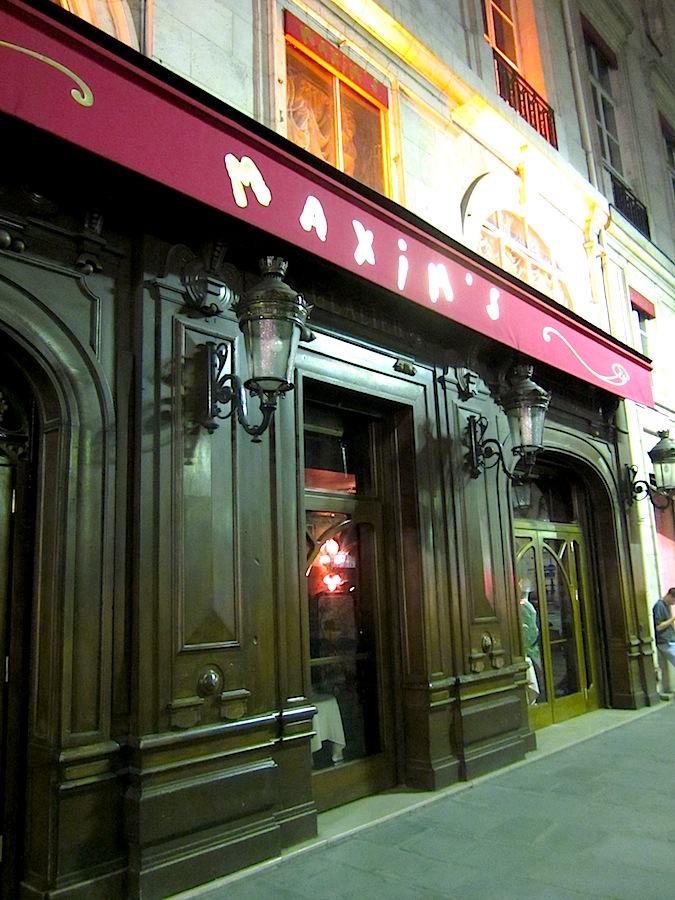 To be continued in Postcards from Paris: Part Deux!Cheers,
To be continued in Postcards from Paris: Part Deux!Cheers,
We began our second day in Paris with breakfast at the hotel in the legendary Les Ambassadeurs dining room. The sumptuous space, formerly the Count of Crillon's ballroom, is replete with gorgeous Baccarat crystal chandeliers, ornate frescoes and polished marble that beautifully embody the Rococo aesthetic. Built in 1758, Les Ambassadeurs has operated as a restaurant within the Hôtel de Crillon since the 19th century. It reached the height of its popularity as a restaurant and night club in the 1870's when it was frequented by the aristocracy and some of the best known figures of the art world. As a result, it has been portrayed in works of art by Edgar Degas and Henri de Toulouse-Lautrec and was also featured in Ernest Hemingway's memoir "A Moveable Feast." In 2011, the restaurant was re-awarded a Michelin star after losing its two star status in 2010 following the departure of Chef Jean-Francois Piege. The very talented Chef Christopher Hache and his team are dedicated to restoring Les Ambassadeurs to its former culinary glory. I have to say they're doing a pretty fabulous job!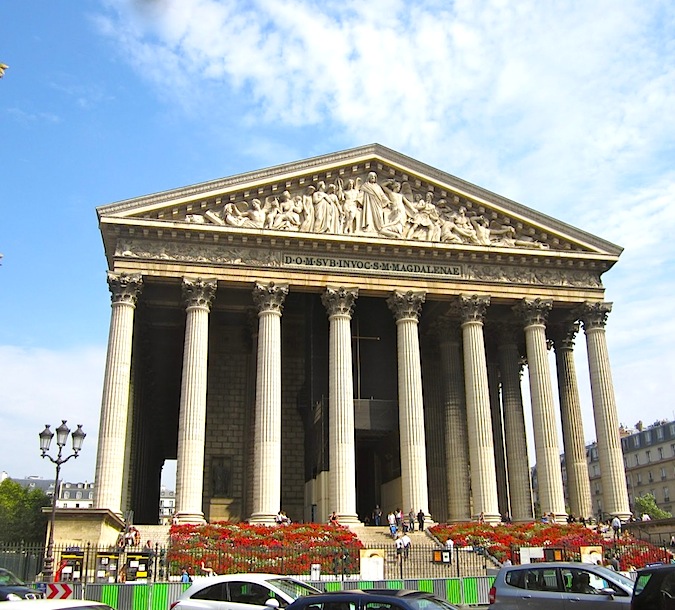 After breakfast we wandered around the city and came across L'eglise de la Madeleine (Church of the Madeleine), a Roman Catholic Church with a long and complicated history. Razed to the ground at three different points during its construction, it was finally built in the Neo-Classical style envisioned by Napoleon who was inspired by the Maison Carée at Nimes, one of the best-preserved Roman temples. Despite Napoleon's plan to have the structure serve as a memorial to the French Army, King Louis XVIII ultimately decided it would serve as a church dedicated to Mary Magdalene which was finally consecrated in 1842.
After breakfast we wandered around the city and came across L'eglise de la Madeleine (Church of the Madeleine), a Roman Catholic Church with a long and complicated history. Razed to the ground at three different points during its construction, it was finally built in the Neo-Classical style envisioned by Napoleon who was inspired by the Maison Carée at Nimes, one of the best-preserved Roman temples. Despite Napoleon's plan to have the structure serve as a memorial to the French Army, King Louis XVIII ultimately decided it would serve as a church dedicated to Mary Magdalene which was finally consecrated in 1842.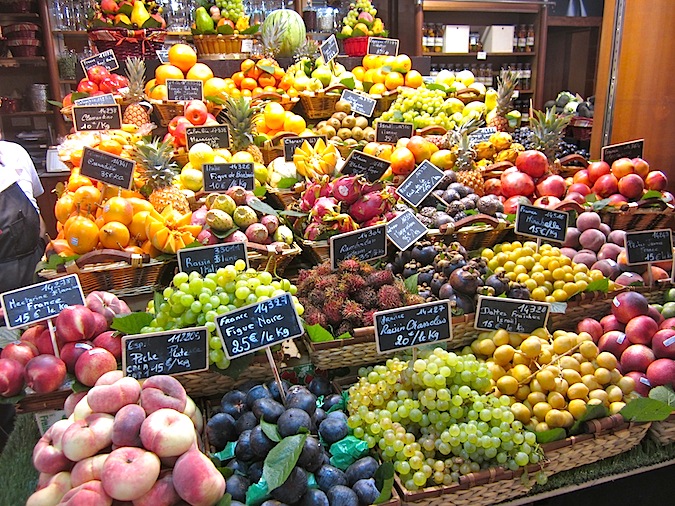
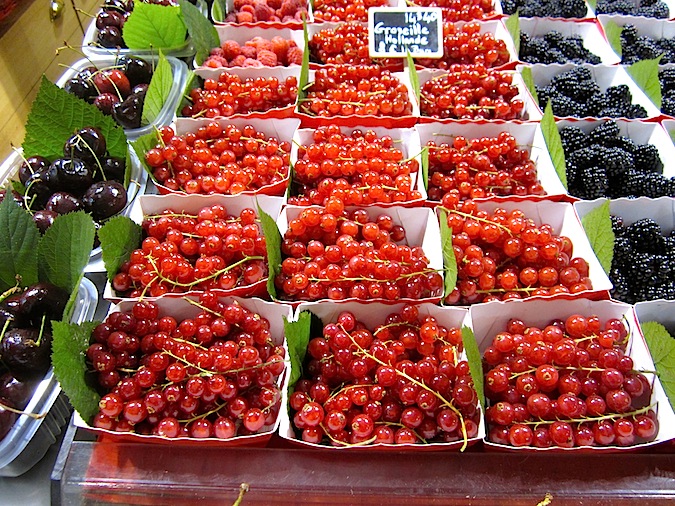 Further down the street on Place de la Madeleine was Hédiard, a fabulous gourmet grocery store featuring beautiful displays of produce, teas, spices and other gourmet specialties. This Parisian gastronomic institution was founded in 1850 by Ferdinand Hédiard and was born out of his love for exotic produce such as lychee, guava and bananas - the likes of which Paris had never seen! This location is Hediard's flagship store and it was from this very place that Hédiard first sold his fabulous produce to the finest restaurants in Paris as well as his loyal customers. He is even credited with providing celebrated artist Eugene Delacroix, a longtime fan, with his first pineapple. The day we were there was actually the first time I had ever seen fresh red currants which looked like beautiful, shiny, ruby red jewels - thanks, Ferdinand!
Further down the street on Place de la Madeleine was Hédiard, a fabulous gourmet grocery store featuring beautiful displays of produce, teas, spices and other gourmet specialties. This Parisian gastronomic institution was founded in 1850 by Ferdinand Hédiard and was born out of his love for exotic produce such as lychee, guava and bananas - the likes of which Paris had never seen! This location is Hediard's flagship store and it was from this very place that Hédiard first sold his fabulous produce to the finest restaurants in Paris as well as his loyal customers. He is even credited with providing celebrated artist Eugene Delacroix, a longtime fan, with his first pineapple. The day we were there was actually the first time I had ever seen fresh red currants which looked like beautiful, shiny, ruby red jewels - thanks, Ferdinand!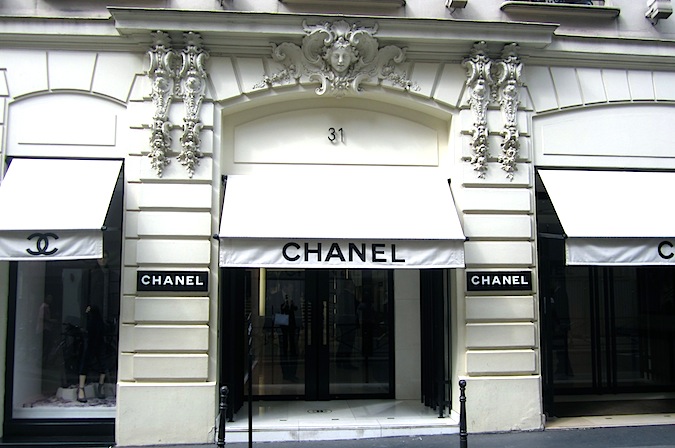
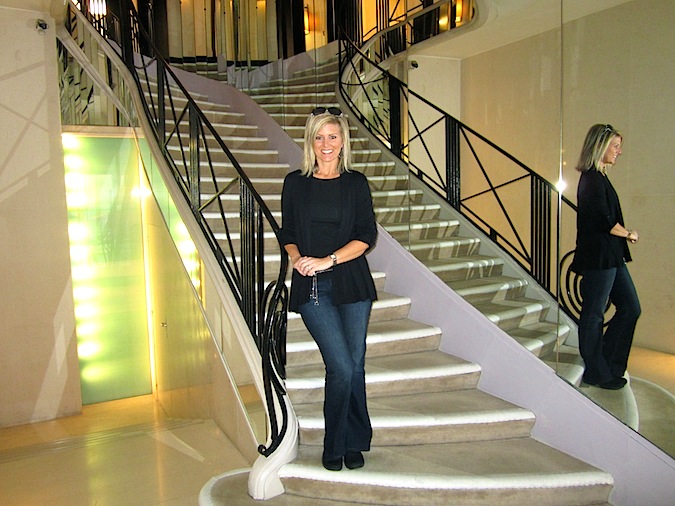
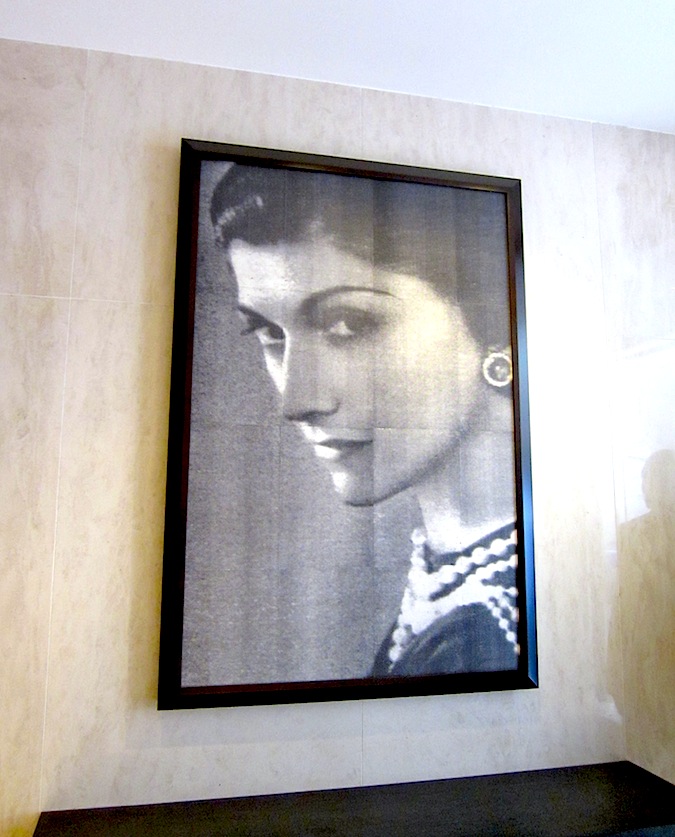 Of course, a trip to Paris just wouldn't be complete without a trip to the mecca of fashion: Chanel! While there are quite a few Chanel stores in Paris, the one located at 31 Rue Cambon holds special meaning because it is also the address of Coco Chanel's apartment which is located directly above the boutique. Mademoiselle Chanel didn't actually live in the apartment (in fact, it doesn't even have a bedroom) choosing instead to live at the nearby Ritz Hotel. Every morning before she crossed Place Vendôme on her way to the Rue Cambon boutique she would call to inform them of her imminent arrival so the staircase of her apartment (pictured above) could be misted with Chanel No. 5. I've been trying to get Steve to do that ever since we've been back but so far no luck. What a way to start the day!
Of course, a trip to Paris just wouldn't be complete without a trip to the mecca of fashion: Chanel! While there are quite a few Chanel stores in Paris, the one located at 31 Rue Cambon holds special meaning because it is also the address of Coco Chanel's apartment which is located directly above the boutique. Mademoiselle Chanel didn't actually live in the apartment (in fact, it doesn't even have a bedroom) choosing instead to live at the nearby Ritz Hotel. Every morning before she crossed Place Vendôme on her way to the Rue Cambon boutique she would call to inform them of her imminent arrival so the staircase of her apartment (pictured above) could be misted with Chanel No. 5. I've been trying to get Steve to do that ever since we've been back but so far no luck. What a way to start the day!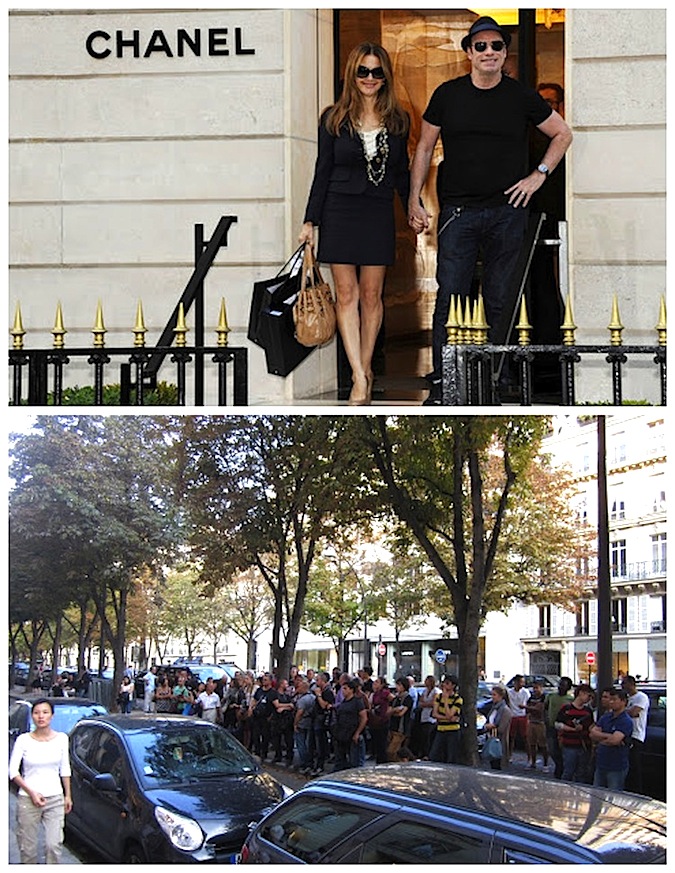 The biggest Chanel buzz during our stay in Paris was the brand new 6,500 square foot Chanel boutique at 51 Avenue Montaigne. This store makes a total of three Chanel boutiques on this revered street alone! The new store was inspired by Coco Chanel's apartment and echoed similar elements including textured screens, sumptuous fabrics and a gorgeous stairway with gilded railings and a cascade of pearls dripping from the ceiling onto the white marble floor below. When we arrived there was a crowd of paparazzi out front who were hoping to catch a glimpse of some other shoppers getting their "Chanel on" that day: John Travolta and Kelly Preston. A flurry of activity surrounded their private fitting room while Chanel associates buzzed in and out with armfuls of stunning merchandise. When the couple left, Kelly was wearing a few beautiful new Chanel necklaces and clutching multiple black bags of fabulousness. If John's trying to make up for something I'd say he's definitely headed in the right direction!
The biggest Chanel buzz during our stay in Paris was the brand new 6,500 square foot Chanel boutique at 51 Avenue Montaigne. This store makes a total of three Chanel boutiques on this revered street alone! The new store was inspired by Coco Chanel's apartment and echoed similar elements including textured screens, sumptuous fabrics and a gorgeous stairway with gilded railings and a cascade of pearls dripping from the ceiling onto the white marble floor below. When we arrived there was a crowd of paparazzi out front who were hoping to catch a glimpse of some other shoppers getting their "Chanel on" that day: John Travolta and Kelly Preston. A flurry of activity surrounded their private fitting room while Chanel associates buzzed in and out with armfuls of stunning merchandise. When the couple left, Kelly was wearing a few beautiful new Chanel necklaces and clutching multiple black bags of fabulousness. If John's trying to make up for something I'd say he's definitely headed in the right direction!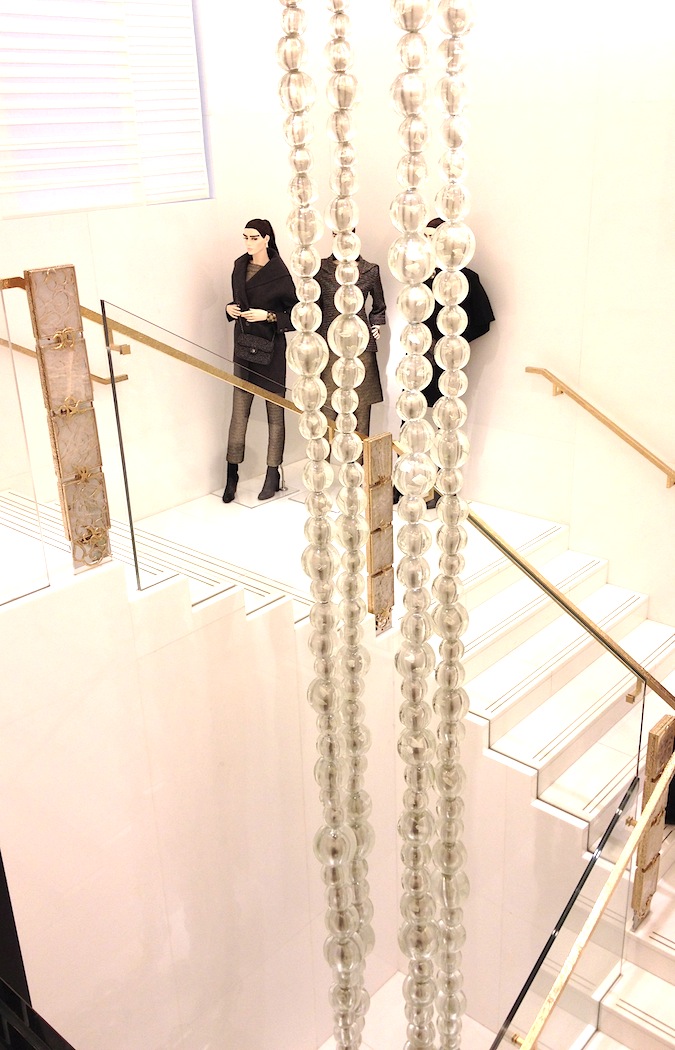
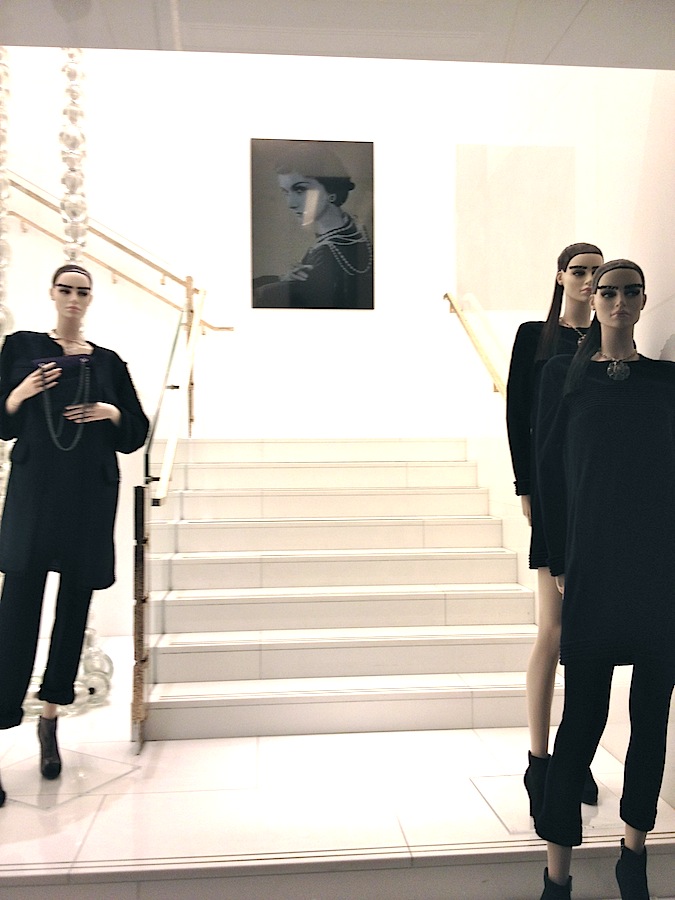 After our Tour de Chanel we visited the Musee de L'Orangerie located in the western end of the Tuileries Gardens. This museum is home to a treasure trove of Impressionist and Post-Impressionist works by artists including Picasso, Matisse, Cezanne, Modigliani and many more. The museum also represents another Midnight in Paris filming location. If you're familiar with the movie, this is where Gil and Inez accompany Paul and Carol for the private showing of Monet's "Water Lilies." Paul, being the pedantic, pseudo-intellectual, Monet expert that he is, proceeds to school the group on the historical significance of Monet's work.
After our Tour de Chanel we visited the Musee de L'Orangerie located in the western end of the Tuileries Gardens. This museum is home to a treasure trove of Impressionist and Post-Impressionist works by artists including Picasso, Matisse, Cezanne, Modigliani and many more. The museum also represents another Midnight in Paris filming location. If you're familiar with the movie, this is where Gil and Inez accompany Paul and Carol for the private showing of Monet's "Water Lilies." Paul, being the pedantic, pseudo-intellectual, Monet expert that he is, proceeds to school the group on the historical significance of Monet's work.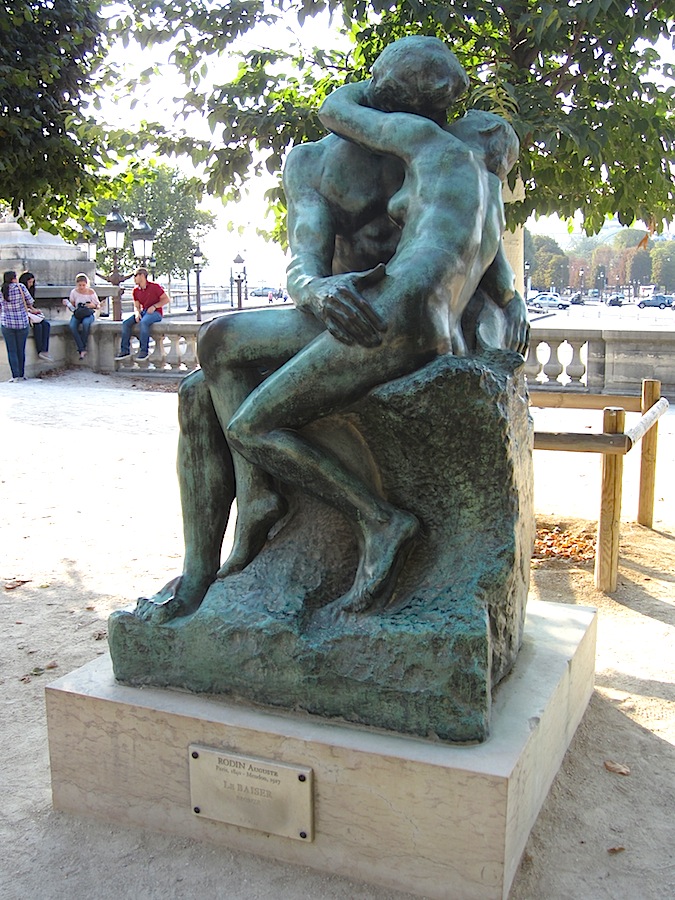 Eight panels of Monet's "Water Lilies", or "Nymphéas" as they are known in France, doreside at L'Orangerie. In 1922 Monet agreed to donate the pieces to the French government with the understanding they would be displayed in specially designed rooms at the museum. However, due to his reluctance to part with them, it wasn't until after his death in 1926 that they were finally installed and displayed for the public. A major renovation took place from 2000-2006 that enabled these historic works to be viewed as Monet had originally intended: under direct diffused natural light. While I was too busy enjoying to take photos of them (sorry!) I did take one of Auguste Rodin's beautiful bronze sculpture "Le Baiser" located on the terrace of the museum.After a busy day exploring Paris we had an early dinner and called it a night before an early train to Champagne the following morning...Cheers,
Eight panels of Monet's "Water Lilies", or "Nymphéas" as they are known in France, doreside at L'Orangerie. In 1922 Monet agreed to donate the pieces to the French government with the understanding they would be displayed in specially designed rooms at the museum. However, due to his reluctance to part with them, it wasn't until after his death in 1926 that they were finally installed and displayed for the public. A major renovation took place from 2000-2006 that enabled these historic works to be viewed as Monet had originally intended: under direct diffused natural light. While I was too busy enjoying to take photos of them (sorry!) I did take one of Auguste Rodin's beautiful bronze sculpture "Le Baiser" located on the terrace of the museum.After a busy day exploring Paris we had an early dinner and called it a night before an early train to Champagne the following morning...Cheers,